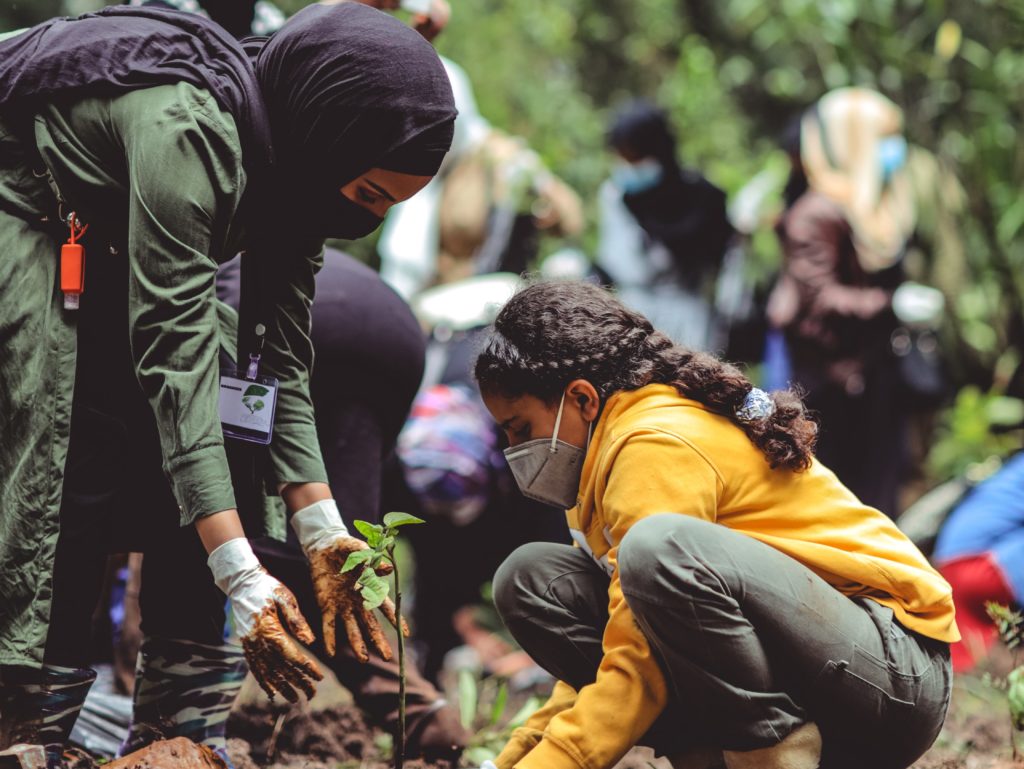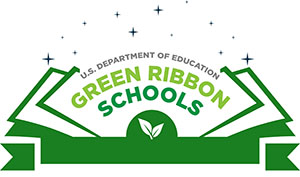
Back to school: How to become a Green Ribbon School
Overview:
The “School Sustainability Audit” will provide a checklist for each environmental impact your school or non-school-based location uses on energy, waste & recycling, and water. The survey will offer suggestions to help your school become more sustainable by conserving resources and increasing efficiency to potentially help your school transition into a “Green Ribbon School.” Green Ribbon schools are committed to environmental sustainability, which focuses on promoting healthy, nutritious meals, reducing environmental impacts and costs (ex. reducing energy and water use), increasing sustainability literacy, and spreading awareness of eco-friendly practices. To be recognized, schools must address one or more of the three pillars:
- Reducing environmental impact
- Improving health and wellness
- Providing effective environmental education
Explore the Green Ribbon Schools website to learn how to join next year’s class of Green Ribbon Schools!
See the Illinois Environmental Protection Agency Green Schools Checklist and Aspen K-12 Climate Action Plan for a more detailed list.
Lesson Plan
- This survey will educate the students, teachers, administrators, facility staff, and parents to spread sustainability awareness. This survey is flexible enough to align with the specific needs of your school since each school is unique. Teachers should escort their students around the school to allow the students to gather all the data to complete the assignment.
Following the overview, the section details the objectives of the materials. After reading and completing this packet, students will …
- Identify the benefits and steps to become a Green Ribbon School in your state.
- Measure indoor water, energy, and waste consumption to identify potential solutions to increase your school’s chances of being a Green Ribbon School.
- Use the data collected from the School Sustainability Audit to create an action plan for change.
- EARTHDAY.ORG believes every learner in every school worldwide should receive fully integrated, evaluated climate and environmental education with a robust civic engagement component. Education is an essential component in addressing climate change. Education can help encourage individuals to change their behavior or attitude to make decisions that benefit all living and nonliving things. Addressing climate change requires collaboration from global and local actions to reduce greenhouse gasses, plastic pollution, biodiversity loss, and other issues. Climate literacy can provide students with the necessary knowledge and skills to better understand the impact of climate change on human activities across the globe. Also, students will be able to learn about different initiatives to spread awareness of climate change with an emphasis on climate literacy.
- According to the Environmental Protection Agency (EPA), "energy costs are the second most costly on K-12 school district operating budgets, costing roughly $8 billion annually." Improving energy efficiency in K-12 schools can help reduce greenhouse gas emissions and provide energy cost-saving opportunities. Students will learn about real-world energy issues and ways to improve energy efficiency to help decrease our use of fossil fuels and reduce energy costs. Energy improvements can help reduce the cost of utility bills and reallocate the extra fund for other educational resources. Click here and have students test their knowledge of clean energy. Schools should replace traditional light bulbs with energy-efficient LEDs and remind teachers to turn off or unplug electronics when not in use to save their energy usage. Lastly, students will complete an energy audit for their school by answering ten questions and monitoring their energy consumption by working with school staff to become a Green Ribbon School one day.
- According to the World Wildlife Fund report, U.S. schools waste roughly 530,000 tons of food annually, and it costs approximately $9.7 million per day (or $1.7 billion per year) to manage the food waste. Schools throughout the U.S. are trying to identify solutions to eliminate food waste, save money, and preserve the environment. For example, Sheridan Elementary School in Nebraska created a composting initiative and collected 150 pounds of leftovers, and only 18% of food waste was thrown in the trash over three weeks. The Smithsonian Magazine stated, "at least 85% of U.S. Plastic Waste went to landfills in 2021." From 1980 to 2022,the U.S. generated 7.4. million tons of plastic waste and grew to 35.7 million, conducted by Beyond Plastics and The Last Beach Cleanup. EARTHDAY.ORG created the Great Global Cleanup, a worldwide campaign to remove billions of pieces of trash from neighborhoods, beaches, rivers, lakes, trails, and parks — reducing waste and plastic pollution, improving habitats, and preventing harm to wildlife and humans.
- Lastly, Wateraid stated that globally approximately 748 million individuals do not have access to safe drinking water, 2.5 billion individuals do not have access to appropriate sanitation, and sadly, more than 500,000 children die yearly from diarrhea due to the lack of these issues. According to the U.S. Geological Survey, the average American uses roughly 100 gallons of water daily, and at least 40 U.S. states are experiencing water shortages. The attitude and behavior toward the water as an unlimited natural resource needs to be changed, and teachers can teach students to conserve, preserve and spread awareness about the water. For example, Ringwood School Ringwood School was sent to the slums of Delhi with the students' winners from the ”Send My Friend to School” campaign. Ringwood School became passionate about water conservation and made a curriculum focused on reducing water usage at their school. In conclusion,these efforts can inspire other schools to become Green Ribbon Schools and share sustainable practices.
- Students should be broken into small groups (2-3 students per group) and create a visual representation of their green ribbon school. Students should refer to the activities conducted earlier with their classmates and watch a video about an elementary green school initiative to gain ideas before drawing their ideal green ribbon school.
Teachers should provide each group with the following materials:
- A sheet of paper
- Crayons, coloring pencils, or watercolors
- Pencils
- A cup of water (optional)
- The U.S. Department of Education created Green Ribbon Schools as a public engagement approach for school sustainability efforts. Schools who are selected as recipients received a federal recognition award in Washington D.C. Each state can nominate five pre K-12 schools or district nominations annually. Click here to read how to apply to become a Green Ribbon School. Use the data collected in the School Sustainability Audit to create an improvement plan and deliver it to decision-makers at your school.
